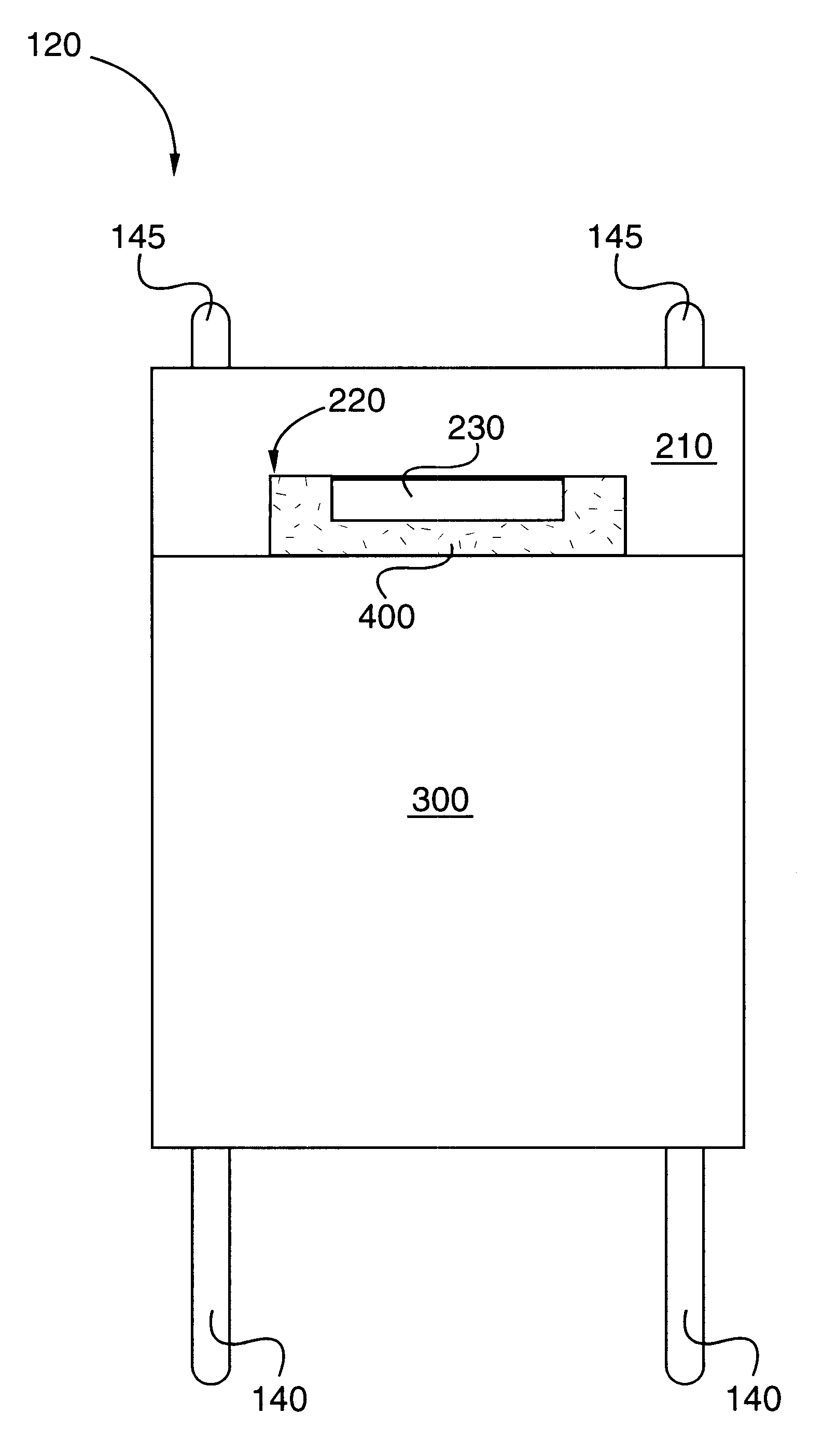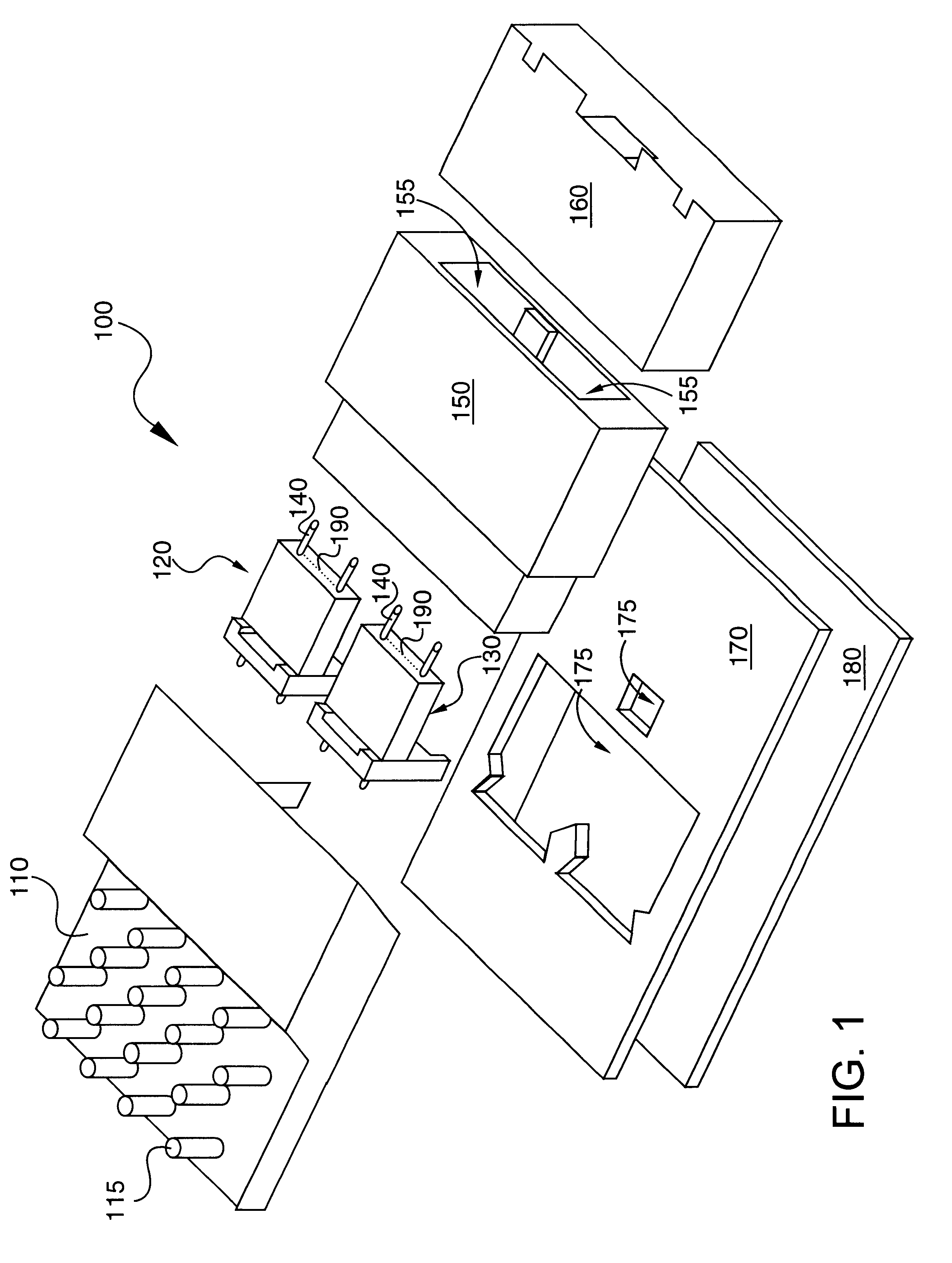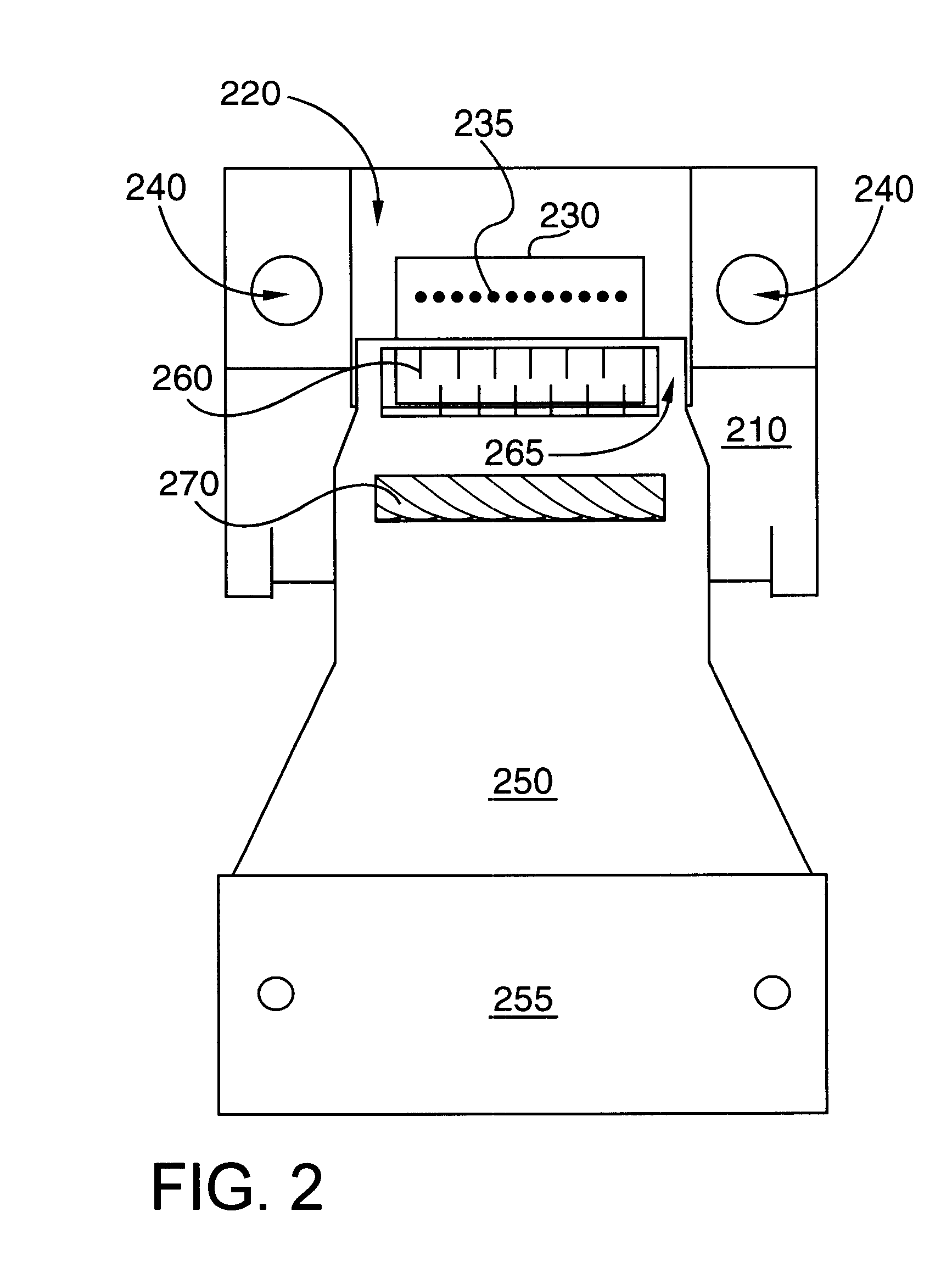Optoelectronic device encapsulant
a technology of optoelectronic devices and encapsulants, which is applied in the direction of optical waveguide light guides, instruments, optics, etc., can solve the problems of uncontrollable radiation, unacceptable cable size and connector size of copper wire technology, and easy to pick up radio frequency signals. , to achieve the effect of avoiding abrasion and preventing interfering accumulation
- Summary
- Abstract
- Description
- Claims
- Application Information
AI Technical Summary
Benefits of technology
Problems solved by technology
Method used
Image
Examples
Embodiment Construction
According to a preferred embodiment of the present invention, an optically clear encapsulant exhibiting a suitably high viscosity has been discovered that may be combined with a photo initiator both to replace a silicon nitride passivation layer required on a VCSEL die and to fill the gap between the die and an optical coupler, preventing light signal degradation. Thus, an optoelectronic package is provided that includes a substrate having an array of one or more sources or detectors, the sources or detectors adapted, respectively, to generate or receive a light signal, an optical coupler aligned with the array, and an optically transparent substrate encapsulant in contact with the substrate that substantially fills a gap between the substrate and optical coupler. Due to the properties of the encapsulant, it both passivates the sources or detectors and prevents interfering accumulations of matter from forming in the gap without degradation of the light signal. Preferably, the encaps...
PUM
 Login to View More
Login to View More Abstract
Description
Claims
Application Information
 Login to View More
Login to View More - R&D
- Intellectual Property
- Life Sciences
- Materials
- Tech Scout
- Unparalleled Data Quality
- Higher Quality Content
- 60% Fewer Hallucinations
Browse by: Latest US Patents, China's latest patents, Technical Efficacy Thesaurus, Application Domain, Technology Topic, Popular Technical Reports.
© 2025 PatSnap. All rights reserved.Legal|Privacy policy|Modern Slavery Act Transparency Statement|Sitemap|About US| Contact US: help@patsnap.com



